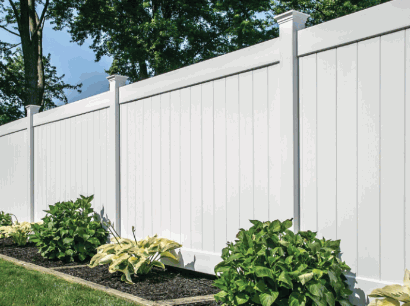Vinyl fencing is gaining popularity for its blend of durability, aesthetic appeal, and low maintenance. Homeowners are drawn to its effective design, providing both functionality and charm to any property.
But what exactly is vinyl fencing, and why are so many homeowners choosing it?
This guide explores its various types, benefits, and average costs associated with installation and upkeep. Whether considering a Privacy Fence or a Picket Fence, understanding the different options is crucial for making an informed decision.
It also provides tips on how to save money while ensuring you get the best value for your investment.
If you’re considering fencing options, this guide is your go-to resource.
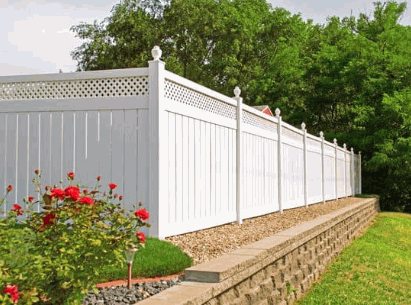
What Is Vinyl Fencing?
Vinyl fencing, also known as PVC fencing, is becoming increasingly popular among homeowners due to its durability, low maintenance requirements, and aesthetic appeal. This type of fence is a cost-effective choice compared to traditional wood fences. Unlike traditional wood fencing, vinyl offers a long-lasting solution that can effectively enhance the design of a property while providing the necessary privacy. With various types of vinyl fence styles available, including decorative features and diverse fence colors, homeowners can choose options that fit their needs and preferences for both function and appearance. Additionally, the installation process can be straightforward with the right local fencing company, making it an appealing choice for many. A professional fence installation ensures all aspects, from gates to posts, are expertly handled.
Learn about: What Is The Best Type Of Wood To Use For Fencing
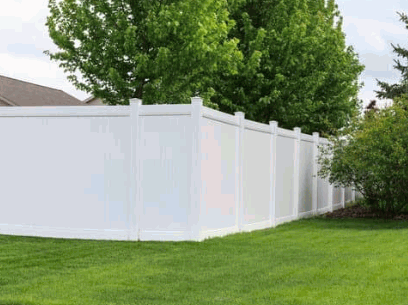
What Are The Benefits Of Vinyl Fencing?
Vinyl fencing provides numerous benefits that make it an attractive option for homeowners looking to enhance their property. It effectively adds to the landscape design and overall home appeal. One of the primary advantages is its exceptional durability compared to wood, as it can withstand harsh weather conditions without warping or fading over time. Additionally, vinyl fencing requires minimal maintenance, allowing homeowners to enjoy its aesthetic appeal without the continuous upkeep associated with other fencing materials. Furthermore, the long-lasting nature of vinyl can be a cost-effective solution in the long run, as it reduces the need for frequent repairs or replacements. This makes it a smart investment for homeowners considering its durability over time.

What Are The Different Types Of Vinyl Fencing?
There are several different types of vinyl fencing available, each with its unique features to cater to homeowners’ specific needs and preferences. The most common types include Privacy Fences, which provide a solid barrier for maximum seclusion, and Picket Fences, which add a classic charm to any property while maintaining visibility. Additionally, Semi-Privacy Fencing offers a balance between privacy and openness, allowing airflow and light without sacrificing too much seclusion. Each type comes in various styles, colors, and designs, making it easy for homeowners to choose the ideal option to enhance their property’s appeal. Whether opting for a chain-link fence or a more decorative style, the possibilities are vast.
Privacy Fencing
Privacy fencing is a popular choice among homeowners seeking to create a secluded and secure environment around their property. These fences are typically tall and solid, designed to block outside views and noise, thereby enhancing the privacy of backyards and outdoor spaces. Made from durable vinyl materials, privacy fences require minimal maintenance and can withstand various weather conditions, making them an effective long-term solution for homeowners. Privacy fences are available in various colors and styles, allowing homeowners to select options that complement their property’s design.
Many individuals appreciate the added security that privacy fencing provides, as it acts as a deterrent to trespassers and unwanted visitors.
- One of the key advantages is increased property value, as a well-installed fence can significantly enhance the appeal of a home.
- Different styles cater to diverse tastes, whether one prefers a classic wooden aesthetic or the sleek look of vinyl.
- Homeowners may also consider additional features, such as gates and decorative elements, which can further personalize their new installation. These features allow for a custom measure of style and functionality.
The decision to invest in a privacy fence not only boosts aesthetic appeal but also contributes to an overall sense of tranquility, making it an alluring option for families prioritizing safety and comfort in their outdoor spaces.
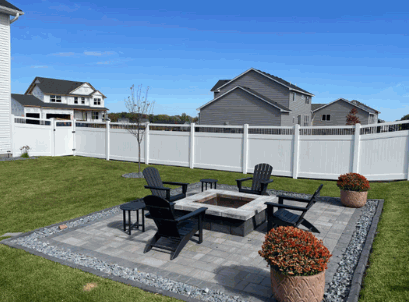
Picket Fencing
Picket fencing is often characterized by its classic design, featuring evenly spaced vertical slats and a charming, decorative appeal that enhances the aesthetic of any home.
This traditional fence style evokes a sense of nostalgia and warmth, often reminding homeowners of simpler times. A picket fence not only serves as a boundary marker but also transforms outdoor spaces into inviting environments, perfect for family gatherings or cozy afternoons.
Each design element, from the shape of the pickets to the finish, contributes to the overall look, allowing customization that suits various architectural styles—be it colonial, cottage, or contemporary. The variety in fence materials and design choices allows homeowners to perfectly match their property style.
- Common uses include:
- Defining property lines
- Enhancing garden aesthetics
- Creating safe play areas for children and pets
Many homeowners choose this style because it fosters a welcoming atmosphere in their neighborhoods, encouraging a sense of community while still providing a measure of privacy.
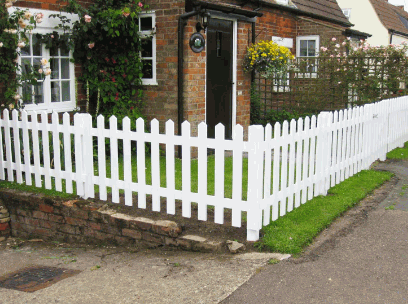
Semi-Privacy Fencing
Semi-privacy fencing strikes a balance between privacy and openness, making it a versatile option for homeowners looking to maintain some visibility while still enjoying a degree of seclusion. This style typically features panels with space between the slats, allowing airflow and light to filter through while providing partial coverage from outside views. Ideal for patios, pools, or gardens, semi-privacy fences offer both functionality and aesthetic appeal, available in various colors and designs to suit different property styles. The durable vinyl materials used in these fences ensure long-lasting performance with minimal maintenance.
One of the standout advantages of using semi-privacy fencing is its ability to enhance the overall appearance of outdoor spaces. By blending decorative charm with practical utility, these fences can elevate the look of a home while serving essential functions.
- Aesthetic Appeal: They can be designed in various styles, which makes it easy to find a perfect match for any home decor.
- Airflow and Light: The gaps between slats facilitate sufficient airflow and allow dappled light, creating a comfortable and enjoyable outdoor atmosphere.
- Boundary Setting: Semi-privacy fencing also clearly delineates property lines, which helps avoid disputes with neighbors while maintaining an inviting look.
- Versatility: Whether surrounding a pool or framing a garden, it’s suitable for various uses.
These characteristics make it a sought-after solution for homeowners seeking to balance charm and functionality.

What Is The Average Cost Of Vinyl Fencing?
The average cost of vinyl fencing can vary significantly based on several factors, including the type of materials used, the height of the fence, and the complexity of the installation process. Homeowners can expect to receive quotes based on the cost per linear foot, which typically ranges between $20 to $40, not including labor. When considering the overall expense, it’s essential to factor in additional costs for gates, posts, and any decorative features that may enhance the fence’s appeal. By obtaining estimates from local fencing companies, homeowners can make informed decisions that align with their budget.
Cost Per Linear Foot
When evaluating the cost of vinyl fencing, the price per linear foot is a crucial metric that homeowners need to consider. This cost can vary based on the type of vinyl material chosen, the height of the fence, and any additional features included. Typically, the cost can range from $20 to $40 per linear foot, which does not include labor or installation fees. Homeowners should obtain multiple estimates from local fencing companies to better understand the overall budget required for their specific fencing project.
Several factors significantly impact this pricing, making it essential for potential buyers to conduct thorough research. Material quality is perhaps the most significant influence, with premium options often commanding higher costs. In addition, local labor rates can vary, affecting the final bill.
Here are key determinants that homeowners should keep in mind:
- Type of Vinyl: Choices range from standard to reinforced, impacting durability and price.
- Height and Style: Taller fences or intricate designs lead to higher material costs.
- Accessories: Gates, post caps, and other enhancements can add to the overall price.
Understanding these elements will equip homeowners with the knowledge needed to make informed decisions regarding their vinyl fencing investment. Utilizing resources like Angi or HomeAdvisor can help in gathering quotes and estimates for the best options available.
Additional Costs To Consider
Plus the cost per linear foot, homeowners should be aware of several additional costs that may impact the overall expense of vinyl fencing installation. These additional costs can include gates, which may range from $150 to $300 depending on size and features, as well as posts and accessories required for secure installation. Labor costs for installation can vary based on the complexity of the project, with estimates typically ranging from $30 to $80 per hour. Therefore, it is essential for homeowners to account for these expenses when budgeting for their fencing project.
Planning a vinyl fencing project can easily become overwhelming if all aspects are not considered. Consulting a cost estimator can help calculate expenses accurately, ensuring the installation aligns with budgetary expectations. It’s wise for homeowners to also factor in the cost of gates, as they are crucial for access and aesthetics. Choosing between types such as iron fence or aluminum fence can also affect the final price. The choice between single or double gates can further impact the budget significantly. Checking with local fencing companies can provide insights into labor and installation costs.
There are various types of posts, such as corner or end posts, which can cost more due to their specialized nature.
- Gate costs: Range from $150 to $300
- Post costs: Usually around $20 to $50 each
- Labor: Estimated between $30-80 hourly
Homeowners should review these elements carefully, ensuring they have a comprehensive understanding of the overall investment. This foresight can help prevent unexpected financial strain during the fence installation process, considering various factors like gates and posts.
Factors That Affect The Cost Of Vinyl Fences
Several factors can significantly affect the cost of vinyl fencing, influencing both the initial purchase price and long-term maintenance expenses. The quality of vinyl material is a primary determinant, as higher-quality options tend to last longer and resist fading, thus justifying their price. Additionally, the choice between a privacy fence or a picket fence can influence costs. The complexity of the installation process, including the type of design selected and the terrain of the property, can affect labor costs. Homeowners should consider these factors when evaluating their budget, using a cost estimator, and selecting the right fencing solution for their property needs.
Understanding cost breakdowns is essential for homeowners, whether they are considering a vinyl fence or other types like chain-link fence, iron fence, aluminum fence, or wood fence.
- Design Choices: Different styles, such as privacy, picket, or ranch, will come with varied prices due to their material usage and manufacturing processes. Decorative features can also enhance the appeal but may increase costs.
- Height and Length: As the dimensions increase, so do the costs. Taller and longer fences require more material and strengthen the overall price.
- Geographical Location: Regional pricing variations can impact labor and material costs, making some areas more expensive than others. Consulting platforms like Angi or HomeAdvisor can provide localized insights.
Engaging in a thorough examination of these elements can not only refine the purchasing decision but also ensure that homeowners invest wisely in their property’s aesthetic and functional needs, incorporating the best fence design and landscape integration.

What Are The Maintenance Costs Of Vinyl Fencing?
One of the most attractive features of vinyl fencing is its low maintenance requirements, resulting in minimal upkeep costs for homeowners. Unlike wood fences that may require regular staining or sealing, vinyl fencing typically only requires occasional cleaning to remove dirt and debris. However, it is essential to budget for potential repairs and replacements over time, as even the most durable fencing can experience wear and tear. Understanding these maintenance costs can help homeowners effectively plan for the long-term care of their vinyl fence.
Cleaning And Maintenance
Cleaning and maintaining vinyl fencing is a straightforward process that contributes to its longevity and aesthetic appeal. Homeowners can typically use a mixture of soap and water to clean the surface and remove any stains or dirt buildup, which usually incurs minimal costs. It’s advisable to perform this maintenance at least once a year to prevent discoloration and ensure the fence remains visually appealing. This low-cost upkeep is one of the significant advantages of choosing vinyl fencing over traditional materials.
To enhance the longevity of a vinyl fence, it is essential to incorporate some simple yet effective cleaning techniques. Regular inspections should occur bi-annually to catch any potential issues early. PVC materials used in vinyl fences are particularly resilient, making maintenance straightforward.
Here are some recommended maintenance tips:
- Use a gentle cleanser: For tougher spots, a diluted vinegar solution can effectively tackle grime without damaging the material.
- Check for damages: Look for cracks or breaks from weather or impacts to address any concerns promptly.
- Keep vegetation trimmed: Ensure plants and weeds are cleared away from the fence line to protect its structure.
Implementing these steps not only sustains the fence’s bright appearance but also reinforces the cost-effective aspect of owning a vinyl fence.
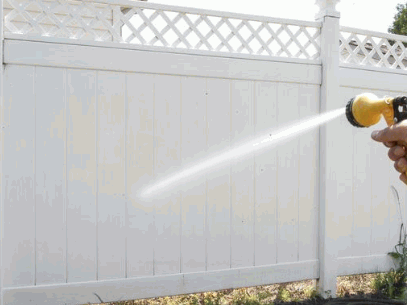
Repairs And Replacements For Vinyl Fence
While vinyl fencing is known for its durability, homeowners should still be prepared for potential repairs and replacements over time, which can affect overall maintenance costs. Understanding these repairs can be crucial for budgeting effectively and ensuring the longevity of one’s property. Common issues may include cracks or damage from extreme weather conditions, and addressing these repairs promptly can prevent more extensive damage. Repair costs typically range from $50 to $200, depending on the severity of the issue and whether professional help is needed. Homeowners should factor these potential costs into their long-term budgeting for vinyl fencing maintenance.
It is wise for homeowners to periodically inspect their vinyl fencing for any signs of wear or damage. Some common repair-related concerns include:
- Cracking: This can occur due to temperature fluctuations or impacts.
- Fading: Over time, sunlight can cause color loss, which may require replacement sections.
- Separation: Improper installation may lead to parts of the fence separating, requiring adjustments or reinstallation.
To manage these repairs efficiently, homeowners should:
- Regularly assess the integrity of the fence, looking for any damage.
- Address minor issues as soon as they’re detected to avoid escalating costs.
- Consider hiring a professional when repairs exceed DIY capabilities to ensure quality fixes.
Being proactive and informed can significantly enhance the lifespan of vinyl fencing while controlling costs.
Is Vinyl Fencing Worth The Cost?
When considering whether vinyl fencing is worth the cost, homeowners must weigh its impressive longevity and low maintenance requirements against initial purchasing expenses. Unlike traditional wood fencing, which may require frequent repairs and replacements, vinyl offers a durable solution that can last for decades with minimal upkeep. This long-term value, combined with its aesthetic versatility that enhances property appeal, makes vinyl fencing an attractive option for many homeowners. Ultimately, the decision should align with personal preferences, budget, and the specific needs of the property.
Durability And Longevity
One of the standout features of vinyl fencing is its remarkable durability and longevity, making it a preferred choice for many homeowners. Unlike wood, which can warp, rot, or attract pests, vinyl is resistant to such issues, allowing it to withstand various weather conditions without significant degradation over time. This durability not only ensures a long-lasting investment but also reduces the frequency and costs of repairs or replacements, further enhancing its appeal to property owners.
Crafted from high-quality materials, vinyl fencing incorporates advanced polymers which contribute to its strength and its resistance to fading, cracking, and chipping. These materials are engineered to endure harsh sun exposure, heavy rain, and freezing temperatures, maintaining their structural integrity over the years. The manufacturing process often includes UV inhibitors and impact modifiers that enhance the durability of the fencing.
- Weather Resistance: Vinyl does not swell or split like wood, ensuring it remains intact regardless of climate conditions. This makes it a preferable choice over traditional wood fence options.
- Low Maintenance: Unlike traditional fencing options, vinyl requires minimal upkeep, saving homeowners both time and money.
- Environmentally Friendly: Many vinyl products are recyclable, making them a sustainable choice for eco-conscious consumers. Recycled PVC components are often utilized in these products.
Ultimately, the combination of these factors makes vinyl fencing a long-lasting solution that stands the test of time.
Aesthetics And Curb Appeal
Vinyl fencing offers an impressive range of design options, allowing homeowners to choose styles and colors that enhance the curb appeal of their properties. With options ranging from classic white picket fences to tall privacy designs, vinyl can complement any architectural style while providing a polished look. This aesthetic versatility not only beautifies the home but can also potentially increase property value, making it a worthwhile investment for homeowners seeking to improve their space.
Beyond traditional styles, the array of fence colors available in vinyl fencing allows for personalization that can suit individual tastes and neighborhood aesthetics. Whether opting for a natural wood finish that matches existing structures or vibrant hues that make a bold statement, each choice contributes uniquely to the overall ambiance of the property.
Consider the following aesthetic options:
- Colors: Shades of white, tan, gray, and even bold colors like red or green.
- Styles: Options include picket, panel, and privacy designs that can enhance both modern and classic homes.
- Texture: Smooth or wood-grain finishes can elevate the fence’s appearance, adding depth and character.
Such thoughtful selections not only beautify the property but also create a welcoming environment for guests and passersby, further enhancing the home’s charm and value.
Low Maintenance
One of the most appealing aspects of vinyl fencing is its low maintenance requirements, which make it a hassle-free option for homeowners. Unlike wood fences that may need regular staining or sealing, vinyl typically only requires occasional cleaning with soap and water to maintain its appearance. This ease of maintenance not only saves time for homeowners but also reduces long-term upkeep costs, allowing them to enjoy their outdoor spaces without constant worry.
The resilience of vinyl means that it withstands various weather conditions without fading or warping over time. Homeowners can rejoice in the fact that vinyl fencing is not susceptible to pests such as termites, which can be a significant concern when working with wooden alternatives. Vinyl’s durability also means that it often outlasts other options like iron fences or aluminum fences in various environments.
To sum up its benefits, consider the following points:
- Resistant to Moisture: Vinyl does not absorb water, preventing issues like mold and mildew.
- Color Stability: Its colors remain vibrant, thanks to UV-resistant additives, requiring fewer touch-ups.
- Easy Repairs: If minor damage occurs, repairs can be straightforward and often do not require professional help.
By opting for a vinyl fence, homeowners secure a long-lasting, stylish solution that genuinely enhances their properties while minimizing maintenance efforts. Whether choosing a privacy fence or a picket fence, the benefits of vinyl fencing are substantial.
Resale Value Of Vinyl Fences
Investing in vinyl fencing can positively impact a property’s resale value, making it an attractive option for homeowners. A well-maintained vinyl fence enhances curb appeal and can set a property apart in the competitive real estate market.
When considering upgrades for a property, vinyl fencing stands out not only for its aesthetic appeal but also for its ability to attract potential buyers. Highlighted below are some of the key advantages of choosing vinyl materials over other options such as wood fences or chain-link fences:
- Durability: Vinyl fences resist cracking, fading, and weathering, ensuring a long-lasting solution.
- Low Maintenance: Unlike wood or iron fences, vinyl requires minimal upkeep, appealing to busy homeowners.
- Value Addition: Homes with attractive fencing often command higher price points, making it a worthwhile investment.
By showcasing these features, homeowners can effectively position their property as a desirable option, ensuring it stands out amidst the busy housing market. Moreover, the addition of decorative features and thoughtful fence design can further enhance the property’s landscape.
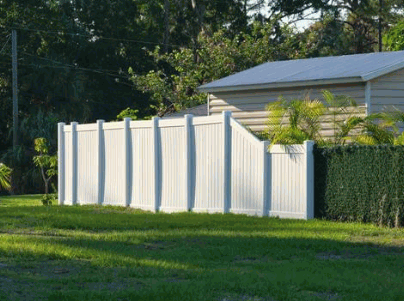
How To Save Money On Vinyl Fencing Costs?
Homeowners looking to save money on vinyl fencing costs can employ a variety of strategies to reduce expenses while still achieving the desired outcome. One effective approach is to research and compare quotes from multiple local fencing companies to find the best prices for materials and installation. Additionally, considering DIY installation can significantly lower labor costs, allowing homeowners to take control of their projects and budgets. By making informed decisions and exploring different options, homeowners can effectively manage their vinyl fencing expenses.
Shop Around For The Best Deals
One of the most effective ways for homeowners to save money on vinyl fencing is to shop around for the best deals from local companies. Comparing prices and services from multiple fencing suppliers can reveal significant differences in pricing, allowing homeowners to choose the most cost-effective options. Many companies often provide special promotions or discounts, making it worthwhile to inquire about any current offers that could further reduce costs.
When embarking on this quest for savings, it’s essential for homeowners to consider various factors beyond just the price. Here are some key points to keep in mind:
- Online Research: Utilize online platforms to gather information on local suppliers and their offerings. Websites often feature customer reviews that can guide smart decisions.
- Direct Comparisons: Create a comparative list detailing the prices, materials, warranties, and installation costs of each supplier, enabling side-by-side assessments.
- Negotiate: Don’t hesitate to discuss price adjustments with suppliers; many are willing to negotiate, especially if they know they’re competing for your business.
In doing so, homeowners can not only find favorable pricing but also ensure they invest wisely in quality fence materials that enhance their property.
Consider DIY Installation
Considering DIY installation for vinyl fencing can be a substantial way for homeowners to minimize labor costs while gaining hands-on experience in the process. By taking on the installation themselves, homeowners can avoid the additional expenses associated with hiring a professional, allowing them to stick to a more manageable budget. It’s essential to research and gather the necessary tools and materials beforehand to ensure a smooth installation process.
Plus cost savings, DIY installation can offer homeowners unique learning opportunities, enhancing their skills and confidence in handling home improvement projects. Engaging in the installation allows for a personal touch, ensuring the fence aligns perfectly with one’s vision for their outdoor space.
- Cost Efficiency: Homeowners save on labor fees, which can be significant depending on the size and complexity of the fencing project.
- Skill Development: Undertaking such a task encourages the development of practical skills, which can be beneficial for future projects.
- Personal Satisfaction: Completing a DIY project brings a sense of accomplishment and enhances the overall value of one’s property.
It’s crucial to dedicate time for thorough research, including understanding the necessary permits, and local zoning laws, and choosing the right materials.
Homeowners should review tutorials and consider consulting with peers to gain insights and tips, setting the stage for a successful fencing installation that stands the test of time.
Opt For A Simpler Design
Opting for a simpler design in vinyl fencing can be an effective strategy for homeowners looking to save on costs while still achieving a functional and attractive solution.
By selecting a basic profile with clean lines, homeowners can not only minimize the initial investment but also reduce maintenance costs over time. This streamlined choice often requires fewer materials, which means less expense involved in installation. Opting for a simpler design also means fewer complications with posts and gates, further reducing costs.
Simplicity is often equated with durability, meaning the fence may withstand the elements better, resulting in long-term savings. Balancing style and budget effectively involves making informed decisions about design options, as homeowners can consider the following:
- Material Choices
- Installation Methods
- Maintenance Requirements
Exploring these factors can assist in crafting a solution that meets both visual and financial needs without compromising on quality. Simplifying the fence design while considering various fence materials and colors can help in achieving an aesthetically pleasing yet cost-effective fencing solution.
Choose A Lower Quality Vinyl
Choosing a lower-quality vinyl option can be a viable way for homeowners to reduce initial costs associated with fencing installation. While this may slightly compromise durability and longevity, it can make the fencing project more affordable in the short term. Homeowners should carefully consider their budget and specific needs when deciding on materials, ensuring that they still achieve a satisfactory balance between cost and quality.
It is crucial to recognize the potential trade-offs that accompany this decision. For instance, lower-quality vinyl may not withstand harsh weather conditions as effectively, which could lead to increased maintenance costs in the long run. Additionally, homeowners should be mindful of potential issues with posts and gates that may arise due to the reduced durability of lower-quality materials.
- Durability: Homeowners might experience fading or cracking much sooner than expected.
- Aesthetics: The visual appeal may diminish over time, impacting the overall look of the property.
- Resale Value: A subpar installation could deter potential buyers who prioritize quality and longevity.
Ultimately, taking the time to weigh the options can offer homeowners both immediate savings and long-term satisfaction with their fencing choices.
